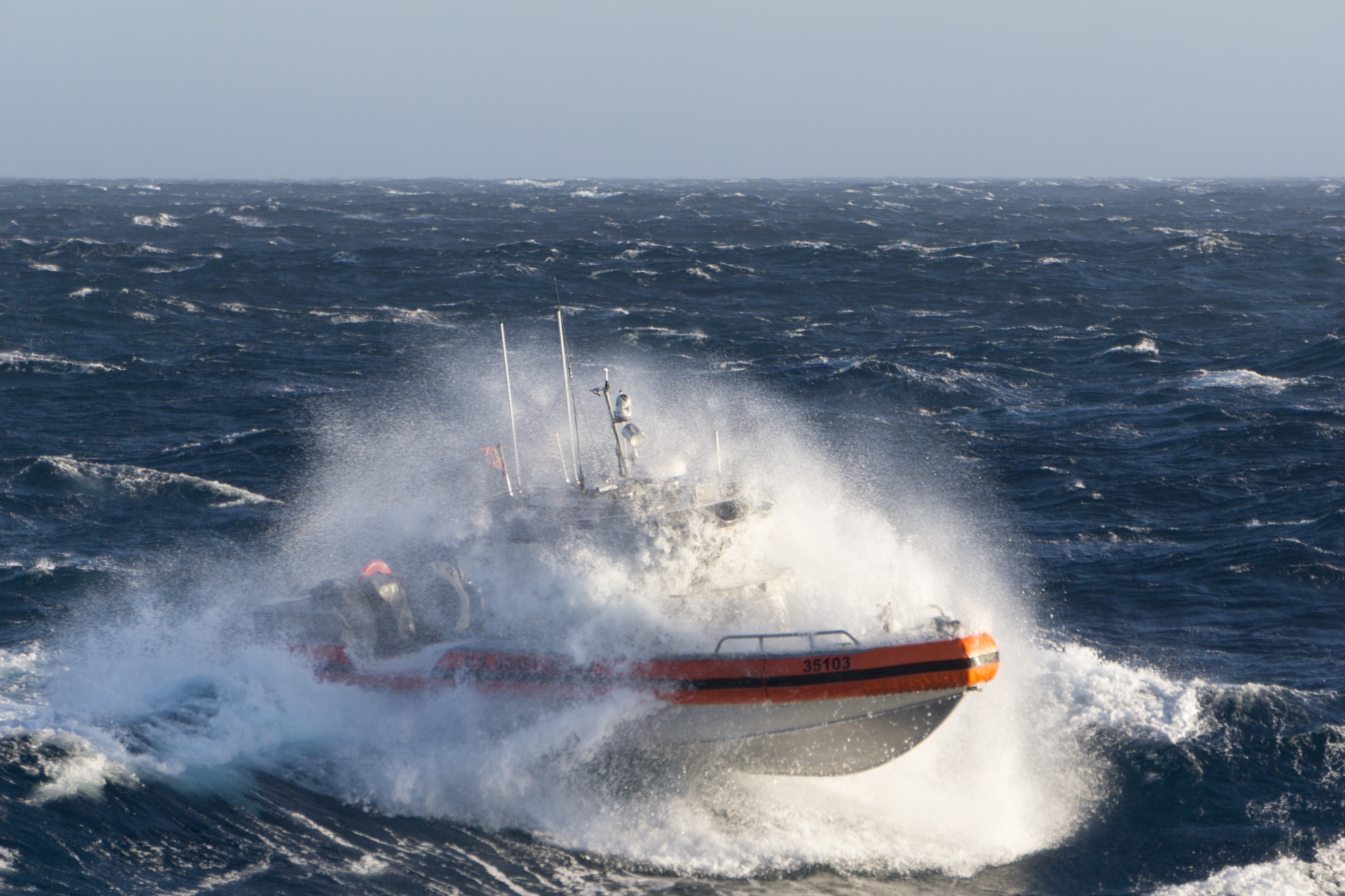MetalCraft Marine US, Cape Vincent, N.Y., and Brunswick Commercial Government Products (BCGP), Edgewater, Fla., recently delivered the ninth long range interceptor (LRI II) to the Coast Guard for its National Security Cutter program.
In the companies' strategic partnership that is now in its sixth year, MetalCraft produces hull cabin packages at its Cape Vincent plant and ships them to BCGP for final finishing and testing. (BCGP also markets an aluminum model line based on the LRI hull shape called the Sentry, built at MetalCraft US.)

The LRIs are powered by twin Cummins diesels. Bryan Goff USCG photo courtesy of MetalCraft Marine US
"The 11M LRI II has been a very successful platform for the Coast Guard," said MetalCraft's contracts manager Bob Clark. “The LRI was the first design to successfully navigate the recovery bay at the transom of the 418' national security cutter. The LRI can operate over the horizon from the mother ship and can travel 236 nautical miles on any given mission on plane giving it a very wide swath to patrol after the mother ship’s electronics have detected something suspicious.”
The boats have twin Cummins 6.7L diesels that power two Ultrajet Systems 305 waterjets to a 40-knot speed and is mission capable to sea state 5 (13') conditions. The boat has a closed or open cabin arrangement that allows the boat to be operated nearly completely open in good weather conditions or fully closed in bad weather.
The boats operate at sea in extreme conditions and the LRI can be recovered at sea state 5 at up to 12 knots. The success of the NSC program in apprehending drug smugglers and illegal immigrants "has been nothing short of remarkable and has included several drug busts that set new records in the U.S. war on drugs," Clark said.

The LRIs can run at 40 knots. Bryan Goff USCG photo courtesy of MetalCraft Marine US
The vessel has a David Clark Co. wireless crew communications system which allows the crew to maintain communication with the LRI or the MSC (military sealift command) mother ship for instructions via wireless to VHF connectivity. The system has a 300' range which allows the crew to communicate while boarding another vessel in close proximity. The David Clark system replaced a previous system that could not withstand the rigors of the LRI mission. The advanced navigation system is produced by Furuno and FLIR. Suspension seating is supplied by Shoxs. All equipment selected for the LRI must meet extreme conditions as they operate regularly in sea state 5 conditions.
The boat has a portable ballistic panel package designed to be mounted to the boat’s forward/side sections in eight minutes for specific high threat missions. The ballistic package is designed to protect the five-person crew from a 200° field of fire. The panels are provided by Safariland and are mounted to external brackets on the fixed superstructure and sliding doors. The open cabin arrangement allows for crew to provide return fire over a wide range with good crew protection.

The LRIs regularly operate in sea state 5 conditions. Bryan Goff USCG photo courtesy of MetalCraft Marine US
“The strength of the boat’s hull is way above average construction with the first third of the hull construction being two times the requirements of ABS construction on any unsupported panel as it is not uncommon for the boats to make direct contact with the ship’s transom sill at the entrance to the recovery bay in very rough seas,” said Clark.
The LRI design has created an entirely new model line for MetalCraft, called the Interceptor, which has had great success with several friendly militaries. The designs are produced in sizes from 7- to 20 meters (23' to 65'). The Coast Guard recently awarded a five-year, $20 million contract to MetalCraft US for shipboard 7M Interceptors in addition to the LRI.




